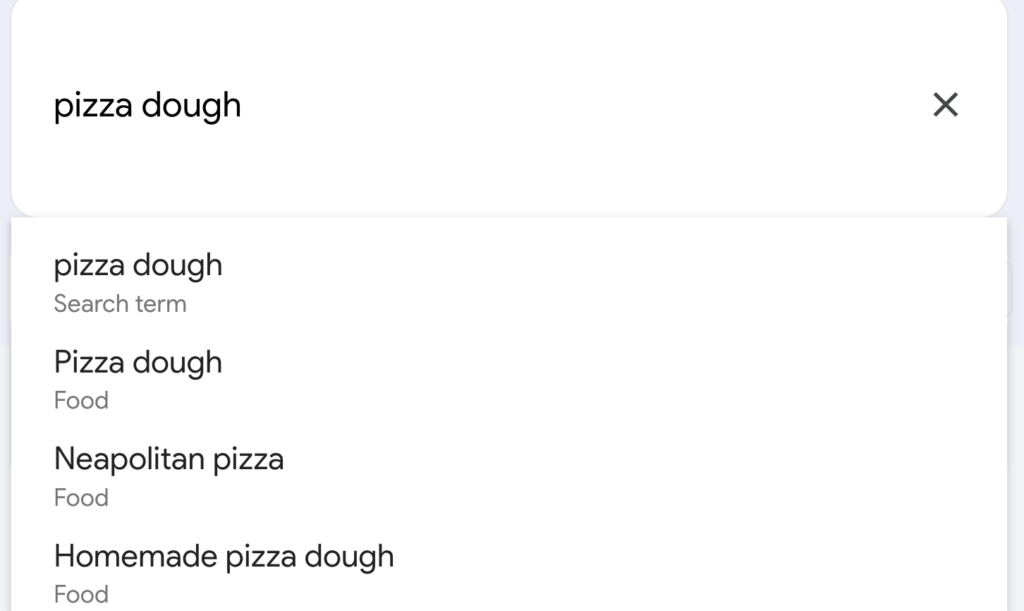In the digital age where search engines are becoming increasingly sophisticated, understanding the impact of semantic keywords on SEO is essential. Semantic SEO transcends traditional keyword matching by interpreting the context and intent behind search queries. This article explores the transformative power of semantic keywords and how they can be leveraged to enhance search engine optimization, providing a comprehensive guide to mastering this nuanced aspect of content strategy.
Key Takeaways
- Semantic keywords enrich SEO by aligning content with the context and intent of user searches, rather than focusing solely on exact keyword matches.
- Cultivating a semantic keyword ecosystem involves creating interconnected topics and subtopics that build a comprehensive content framework.
- The integration of natural language processing (NLP) in SEO highlights the shift from isolated keywords to understanding the broader context of queries.
- Applying semantic keywords to content, such as blog posts, enhances the depth and relevance, improving both user experience and search rankings.
- Utilizing tools for semantic content optimization can simplify the process of keyword and topic research, aiding in the creation of contextually rich content.
What are Semantic Keywords?
Semantic keywords are simply phrases that are conceptually related to your main topic and focus keyword.
In other words, you can assess semantic keywords as phrases that would naturally pop up as part of a discussion around a specific topic.
For example, if your target keyword is “bipolar disorder” some semantically related keywords would include “mood disorder”, “depressive states” and “manic episodes”. While you may not be looking to directly rank for these terms these do make sense from a topical relevance perspective.
Since Google has been pushing through regular algorithm updates to ensure relevant SERP results show up on users’ feeds the relevance of semantic keywords has dramatically increased.
Importance of Semantic Keywords in SEO
In the early days of search engines SEOs used to utilize keyword stuffing to manipulate search engines like Google.
These search engines had a hard time in providing SERP results that were the most informative and relevant.
Subsequently, Google made their algorithm stronger and more robust with updates like E-E-A-T which meant SEOs had to power their way through with more relevant methodologies which not only fulfilled search engine query requirements but also supported the end user.
People use search engines for a lot of different reasons and search engines like Google are accounting for those factors. When SEOs and Content Teams provide more context and more relevant usage of semantic keywords in their content copy there is a higher chance of aligning the final output with the searcher’s query.
Despite Google claiming that semantic keywords don’t come into play as a ranking factor SEOs have utilized semantic keywords in multiple sectors and seen a correlation between ranking and usage of semantic keywords.
Best Practices of Semantic SEO
Publish “Topically Relevant” Content
Brian Dean from Backlinko ran a Google Ranking Study and the interesting finding was that topically relevant content turned out to be one of the top ranking factors.
If Topically Relevant content is so important then we as SEOs better know how to optimize for it.
For example, last year I wanted to rank for a Social Commerce platform I was supporting for the keyword “best online earning app in Pakistan”.
I could have written a review about the social commerce platform itself and kept it short.
Instead, I wrote a 5000-word full-fledged ultimate guide on the best earning apps in Pakistan.
Because my article was topically relevant it rose quickly to the top of Google and my clients got over 200K organic clicks within a year through that guide.
How to find semantic keywords
There are multiple methods through which SEOs can locate semantic keywords. Some of these are:
- SEMRush Keyword Magic Tool
SEMRush Keyword Magic Tool boasts more than 25 billion keywords in its database and you can use it for semantic keyword research as well. When you enter a word or a phrase, the tool provides “Broad Match” results by default. These are the close variation keywords.
For example, here are the results for “how to make pizza dough”.

On the left side of the SEMRush panel, you’ll find a list of keyword groups that are sorted by the number of results.
This is a good place to find semantic keywords.

- Google Search
You can also find semantically related keywords through Google Search. You will need to pay special attention to the following elements:

- Google Trends
When you explore a subject in Google Trends, you can find related topics and search terms.
Just enter a search term and choose a result from the list:

Harnessing the Strength of Semantic Keywords

Beyond Traditional Keyword Research
The landscape of SEO is evolving, and with it, the strategies for keyword research. Traditional keyword research is no longer sufficient; it’s about diving deeper into the ‘why’ behind the searches. Semantic keyword research involves understanding the context and the user’s intent, moving beyond mere phrases to grasp the full scope of a query.
- Keyword Research: It’s crucial to identify long-tail keywords and questions that resonate with your audience’s needs.
- Topic Clusters: By organizing content into clusters around a central theme, you enhance the semantic relationship between pages.
These approaches require tools that offer insights beyond the obvious, such as Google’s “People also ask” or “Related searches”. By balancing core keywords with broader topics and subtopics, you create a rich, interconnected content ecosystem that search engines love.
Embracing semantic keyword research is not just about adapting to search engine algorithms; it’s about providing value to your audience by answering their questions and fulfilling their search intent.
Cultivating a Semantic Keyword Ecosystem
Creating a semantic keyword ecosystem is akin to cultivating a garden; it’s about nurturing a rich variety of terms that are conceptually related to your core topic. It’s not just about the individual keywords, but how they interconnect to form a cohesive whole.
For example, if you’re focusing on the topic of ‘sustainable fashion,’ your semantic garden might include:
- Eco-friendly fabrics: For those seeking environmentally friendly materials.
- Slow fashion brands: Catering to users interested in the movement.
- Ethical fashion: Encompassing broader ethical considerations in the industry.
By integrating these semantically related keywords, you’re not only targeting specific queries but also building a network of content that search engines can recognize as authoritative and comprehensive.
Remember, the goal is to create content that resonates with both users and search engines. This means balancing your core keywords with broader themes and nested subtopics. Utilizing tools like Google’s ‘People also ask’ or ‘Related searches’ can provide valuable insights into how to expand your semantic reach. As the Google Algorithm Update suggests, semantic keywords are indeed a ranking factor for SERPs, making them a cornerstone of modern SEO strategies.
Aligning Content with User Intent
Understanding and aligning content with user intent is a pivotal step in the SEO journey. It’s about creating a seamless connection between what users are searching for and the content you provide. When businesses comprehend user intent, they can craft content that satisfies not just search engine algorithms but also strongly connects with their intended audience.
Different types of user intent require different content strategies. Here’s a quick rundown:
- Informational: Users are seeking knowledge. Your content should educate with guides, explainers, and how-to articles.
- Navigational: Users are looking for a specific site or page. Make sure your site’s structure is intuitive and easy to navigate.
- Transactional: Users are ready to make a purchase. Focus on product pages, comparisons, and compelling calls to action.
Embarking on this journey of aligning content with search intent is about more than just better SEO or higher traffic. It’s the path to content mastery, ensuring that every piece of content you create is purposeful and impactful.
The Benefits of Semantic SEO and Relevant Search Results

Boosted Organic Traffic and User Engagement
When it comes to the digital landscape, organic traffic is the lifeblood of any website. By leveraging semantic keywords, you’re not just attracting visitors; you’re drawing in an audience that is actively seeking what you have to offer. This alignment between user intent and your content can lead to a significant uptick in traffic that is both relevant and engaged.
Here’s how semantic SEO can enhance user engagement:
- It targets users who are already interested in your niche, leading to higher engagement rates.
- Semantic SEO helps in achieving a more substantial online presence, increasing the likelihood that users will find your content.
- By focusing on user intent, you can improve the user experience, making visitors more likely to stay on your site, interact with your content, and convert.
With the right semantic strategies in place, your content becomes more than just information; it becomes the answer to your audience’s questions. This not only boosts traffic but also fosters a loyal user base that values your content.
Tracking the success of your semantic SEO efforts can be done by observing key performance indicators such as organic traffic growth, keyword rankings for semantically related terms, and conversions from organic traffic. These metrics provide tangible evidence of the benefits that semantic SEO brings to your website.
Elevating Content Quality and Relevance
In the realm of SEO, the adage ‘content is king’ still holds true, but it’s the quality and relevance of that content that wears the crown. Semantic search has shifted the focus from mere keyword density to the richness of the content’s context. This encourages the creation of material that resonates with the user’s intent and provides comprehensive insights into their queries.
By integrating semantic keywords, you’re not just aiming for a spot in search results; you’re striving to offer value that keeps readers engaged. Here’s how you can elevate your content’s quality and relevance:
- Understand the user’s search intent and craft content that addresses their needs and questions.
- Include LSI (Latent Semantic Indexing) keywords to cover various aspects of your topic, enhancing the content’s comprehensiveness.
- Avoid outdated tactics like keyword stuffing, which can harm your content’s quality and user experience.
Improved content relevance and quality lead to a more satisfying user experience, which is the cornerstone of not only higher engagement but also increased trust and authority.
Remember, investing in quality content is not just about appeasing search engines; it’s about creating linkworthy web pages that people genuinely want to share. This often means producing something original, like in-depth research or insightful analysis, that stands out in the crowded digital landscape.
Staying Ahead in the SEO Evolution

As the SEO landscape continues to evolve, staying ahead means embracing the changes that come with semantic search. Semantic SEO isn’t just a fleeting trend; it’s a fundamental shift in how search engines interpret and rank content. By understanding the nuances of semantic search, you can ensure your SEO strategy remains robust and adaptive.
With each algorithm update, the rules of the game change. Those who adapt quickly to the ‘Evolution of Search Engine Ranking Factors’ can maintain or even improve their search visibility.
To stay competitive, it’s essential to keep an eye on emerging trends and understand how they might influence your SEO approach. Here’s a quick rundown of steps to keep your SEO strategy future-proof:
- Regularly update your knowledge of search engine algorithms
- Analyze your content’s performance and refine based on data
- Integrate semantic search principles into your content creation
- Monitor industry trends and adapt your strategies accordingly
Remember, the transition from traditional to semantic SEO is not just about technology; it’s about aligning with the way users search and interact with content online.
Understanding Semantic Keywords
The Role of Natural Language Processing in SEO
In the realm of SEO, the advent of Natural Language Processing (NLP) has been a game-changer. NLP allows search engines to interpret the nuances of human language, paving the way for a more intuitive search experience. This technology is at the heart of semantic SEO, enabling search engines to understand not just keywords, but the context and intent behind user queries.
Voice search is a prime example of NLP in action. As users increasingly turn to voice commands for their search needs, content optimized for semantic SEO becomes more crucial. It’s about aligning with the way people naturally communicate, whether through typing or speaking.
The strategic optimization of content to match conversational language patterns ensures that regardless of the search method, the content resonates with users.
Semantic SEO leverages AI and NLP to deliver search results that are not just relevant, but precise. This approach goes beyond mere keywords to analyze the context in which words are used, how they relate to one another, and ultimately, the meaning they convey within the content.
The Shift from Keywords to Context and Intent
The evolution of search engines has brought us to a pivotal point where the focus has shifted from keywords to topics and user intent. Search engines like Google are not just looking for keywords anymore; they’re striving to understand the intent behind each search query and the context in which keywords are used. This shift necessitates a change in how we approach SEO.
To adapt to semantic search engine optimization, it’s crucial to shift your focus from keywords to topic clusters and user intent. This involves creating content that aligns with the various types of search intent: informational, navigational, transactional, or commercial investigation.
Understanding search intent is like being a detective. You need to analyze the words used in the search query, the current search engine results page (SERP), and tailor your content to satisfy the searcher’s true needs. Here’s a quick guide to analyzing search intent:
- The Words Themselves: Look for question words (how, what, why) or shopping indicators (best, compare).
- SERP Analysis: Check the types of results that are currently ranking to understand the expected content format.
By focusing on the broader topics and the reasons behind searches, we can create content that resonates more deeply with our audience and is favored by search engines.
The Importance of LSI Keywords in Content Strategy
In the realm of SEO, LSI (Latent Semantic Indexing) keywords play a pivotal role in enriching content strategy. They are not just about synonym replacement or keyword stuffing; rather, they add depth and context, making your content more relevant and comprehensive. This is crucial because search engines, like Google, are increasingly adept at understanding the nuances of language, thanks to advancements in natural language processing.
LSI keywords should be woven into content organically, enhancing readability and providing value to the reader. Their strategic use can lead to improved search rankings and user engagement.
Here’s why incorporating LSI keywords is beneficial:
- They help avoid penalties for keyword stuffing by offering language variety.
- Content appears more valuable to search algorithms when it includes relevant LSI keywords.
- A content strategy that integrates LSI keywords satisfies a broader range of search intents, which can enrich user engagement.
Remember, the goal is to create content that resonates with both users and search engines. Avoid forced insertion of LSI keywords, as it can disrupt the natural flow and potentially lead to higher bounce rates. Instead, focus on crafting a narrative that naturally includes these keywords, thereby enhancing the overall quality and relevance of your content.
Semantic Keyword Use Cases

Enhancing Blog Posts with Semantic Richness
In the realm of SEO, the infusion of semantic keywords into your blog posts can be a game-changer. By weaving in semantically related terms, you’re not just ticking off SEO checkboxes; you’re crafting a narrative that resonates with both your audience and search engines. This approach ensures that your content is not only found but also valued and understood.
When you optimize your blog posts with semantic richness, you’re essentially painting a broader, more vivid picture for your readers. It’s about creating a tapestry of related concepts and themes that support your main message.
Here’s a simple guide to get you started:
- Begin with a core topic and identify related subtopics.
- Use tools to uncover semantic keywords that align with these subtopics.
- Integrate these keywords naturally into your content.
- Review and revise to maintain a natural flow and readability.
Remember, the goal is to enhance the user experience by providing comprehensive and contextually relevant content. This not only satisfies the reader’s quest for information but also signals to search engines the depth and relevance of your content.
Creating Comprehensive Content
Creating comprehensive content is about constructing a rich tapestry of information that fully envelops a topic. It’s not just about peppering your content with keywords; it’s about providing depth, insight, and value. This approach not only satisfies the user’s quest for information but also signals to search engines the breadth and authority of your content.
To achieve this, consider the following steps:
- Doing in-depth research to understand the questions and problems your audience is trying to solve.
- Creating rich, informative content that answers their questions or shows how to solve their problems.
- Using structured data to help search engines understand the context and content of your pages.
- Building a topic hub of related content to establish topical authority and meet the broader needs of your target audience.
Remember, comprehensive content is the cornerstone of a robust semantic SEO strategy. It’s the kind of content that stands the test of time and keeps users coming back for more.
While tools can guide you, your critical thinking and understanding of your audience are what truly make your content resonate. Use semantic keywords, terms, and phrases to boost your content’s longevity, authority, and search visibility for improved SEO performance.
Improving User Experience and SEO Success
In the realm of SEO, the user’s journey through your content is paramount. Good user experience (UX) is the cornerstone of semantic SEO. When your audience finds content that resonates with their intent, not only does their satisfaction soar, but so does your content’s ability to rank well.
By weaving semantic keywords into your content, you’re not just ticking SEO boxes; you’re crafting an experience that’s both enjoyable and valuable. This dual focus on relevance and user satisfaction is a key driver of SEO success.
Here are some key strategies to enhance UX through semantic SEO:
- Balance technical SEO with user-friendly design.
- Integrate multimedia elements like videos and images to keep users engaged.
- Optimize all content, including multimedia, to be informative and easy to navigate.
Remember, when you align your content strategy with user intent and semantic richness, you’re setting the stage for improved search engine rankings, increased organic traffic, and a superior user experience.
Utilizing Semantic Content Optimization Tools
Tools for Keyword and Topic Research
In the quest for top-notch SEO, the right tools can make all the difference. Semrush and Ahrefs lead the pack with their comprehensive suites for topic analysis and keyword discovery. They help you identify new potential topics and analyze related keywords, ensuring your content is aligned with what your audience is searching for.
When it comes to content analysis and optimization, it’s crucial to:
- Start by identifying target keywords and topics using tools like Google Keyword Planner, SEMrush, or Ahrefs.
- Determine the search intent behind each keyword. Is it informational, transactional, or navigational? Tools like AnswerThePublic can reveal the underlying questions driving search queries.
These tools not only provide related search terms but also act as generators for relevant keywords, giving your content the semantic richness it needs.
Analyzing top-ranking pages is another key step. Use an LSI graph to examine well-performing content and identify common phrases and terms, including LSI keywords to enhance content comprehension. Lastly, don’t forget to filter and refine your search based on metrics like search volume and keyword difficulty, and identify keyword groups to uncover subtopics and related concepts for a comprehensive content strategy.
Navigating Semantic SEO with AI Assistance
The advent of AI in the realm of SEO has been nothing short of revolutionary. With its capacity to parse through vast amounts of data and understand the nuances of language, AI tools have become indispensable for those looking to master semantic SEO. AI doesn’t just process information; it uncovers the layers of meaning behind search queries.
One of the key benefits of using AI for semantic SEO is its ability to analyze user intent and context. This is not about replacing human insight but augmenting it with powerful analytics that can process information on a scale unattainable by humans alone. By doing so, AI assists in aligning content with the multifaceted nature of user searches, ensuring that the content resonates with the intended audience.
Despite the clear advantages, it’s essential to recognize the limitations of AI. It’s a tool that requires human guidance to navigate the complexities of semantic nuances and user intent.
To effectively utilize AI in your semantic SEO strategy, consider the following steps:
- Identify the best AI tools that align with your SEO goals.
- Understand the features and benefits of each tool, and how they can aid your strategy.
- Implement the tools to analyze and optimize your content for semantic richness.
- Continuously monitor and adjust your strategy based on AI-driven insights and analytics.
Measuring the Impact of Semantic Optimization
Understanding the effectiveness of your semantic SEO strategy is crucial for continuous improvement. Key performance indicators (KPIs) are the compass that guides your optimization efforts and helps you gauge success. These metrics can range from organic traffic growth and keyword rankings to user engagement and conversion rates.
To truly measure the impact, it’s essential to look beyond surface-level analytics and delve into the nuances of user behavior and content interaction.
Here’s a simple breakdown of KPIs to monitor:
- Organic search traffic: Are more users finding your site through search engines?
- Keyword rankings: Is your content ranking for a broader set of relevant terms?
- Bounce rate: Are visitors staying on your site longer because the content is more relevant?
- Conversion rates: Is your semantically optimized content leading to more conversions?
- User engagement: Are users interacting with your content more frequently?
By regularly analyzing these KPIs, you can refine your strategy, ensuring that your content remains relevant and continues to meet the evolving needs of your audience.
Conclusion
In the dynamic world of SEO, semantic keywords emerge as the linchpins of content relevance and user experience. They are not just about aligning with search queries but about resonating with the searcher’s intent and context. As we’ve seen, the benefits of semantic SEO are manifold—from boosting organic traffic to enhancing content quality. By embracing semantic strategies, you’re not just keeping up with the algorithms; you’re crafting content that’s genuinely useful, engaging, and primed for success in the search rankings. Remember, it’s not just about the words you use, but the meaning and connections they create. So, let’s continue to delve into the subtleties of language and context, and let the power of semantics propel our content to the forefront of the digital race.
Frequently Asked Questions
What are semantic keywords in SEO?
Semantic keywords are contextually related terms that enhance the relevance of content by focusing on the user’s intent and the broader topic, rather than just the specific keywords used in a search query.
How do semantic keywords improve user experience?
By incorporating semantic keywords, content becomes more comprehensive and aligned with user intent, providing more accurate and helpful information which improves the overall user experience.
What is the role of natural language processing (NLP) in SEO?
NLP helps search engines understand the context and intent behind search queries, allowing them to deliver more relevant results based on the semantic meaning of the content rather than just keyword matching.
How can I harness the power of semantic keywords for my content?
To harness semantic keywords, go beyond traditional keyword research to develop an ecosystem of related topics and subtopics that reflect the intent and context of your target audience’s search queries.
What are LSI keywords and why are they important?
LSI (Latent Semantic Indexing) keywords are terms related to the main keywords that help search engines understand content context and relevance, improving the chances of ranking higher in search results.
Can semantic SEO impact organic traffic and engagement?
Yes, semantic SEO can significantly boost organic traffic and user engagement













